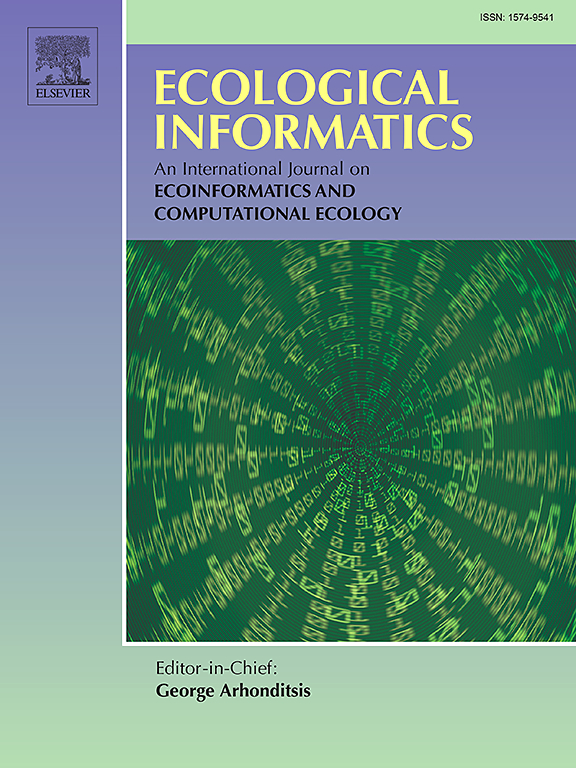Adaptation of deep learning models to distinguish species with strongly overlapping characteristics: the example of spores of the genus Riccia
IF 7.3
2区 环境科学与生态学
Q1 ECOLOGY
引用次数: 0
Abstract
The liverwort genus Riccia is fairly characteristic in itself, but differentiation between some of the species herein proved as complex. Morphological thallus characteristics show a wide overlap and variation, also influenced by environmental conditions, whereas spore characteristics might be more consistent within individual species. Thus, here we investigated if morphological spore characteristics can be analyzed by means of generative as well as discriminative deep learning models, allowing a differentiation between very similar species. We applied a modified Generative Adversarial Network on spore images of the genus Riccia to generate images, that have a better expression of class specific morphological features. We also created one single spore image for every species that comprises the representative species characteristics. This approach allowed us to also distinguish morphologically very similar taxa and to quantify the morphological similarity between them. Our results show that generative modeling can improve morphological species classification in biology and provides a framework to quantify qualitative species features and similarities. These new tools facilitate more accurate and efficient species identification, thus greatly advancing methodologies in taxonomic research and environmental monitoring.
适应深度学习模型来区分具有强烈重叠特征的物种:蓖麻属孢子的例子
Riccia苔属本身是相当有特色的,但其中一些种之间的区分被证明是复杂的。形态菌体特征表现出广泛的重叠和变异,也受环境条件的影响,而孢子特征在单个物种内可能更为一致。因此,我们在这里研究了形态孢子特征是否可以通过生成和判别深度学习模型来分析,从而允许在非常相似的物种之间进行区分。采用改进的生成对抗网络对蓖麻属的孢子图像进行处理,生成的图像能更好地表达蓖麻属的特定形态特征。我们还为每个物种创建了一个包含代表性物种特征的单个孢子图像。这种方法也使我们能够区分形态上非常相似的分类群,并量化它们之间的形态相似性。我们的研究结果表明,生成模型可以改善生物学中的形态物种分类,并提供了一个量化定性物种特征和相似性的框架。这些新工具有助于更准确和有效的物种鉴定,从而大大促进了分类学研究和环境监测的方法。
本文章由计算机程序翻译,如有差异,请以英文原文为准。
求助全文
约1分钟内获得全文
求助全文
来源期刊

Ecological Informatics
环境科学-生态学
CiteScore
8.30
自引率
11.80%
发文量
346
审稿时长
46 days
期刊介绍:
The journal Ecological Informatics is devoted to the publication of high quality, peer-reviewed articles on all aspects of computational ecology, data science and biogeography. The scope of the journal takes into account the data-intensive nature of ecology, the growing capacity of information technology to access, harness and leverage complex data as well as the critical need for informing sustainable management in view of global environmental and climate change.
The nature of the journal is interdisciplinary at the crossover between ecology and informatics. It focuses on novel concepts and techniques for image- and genome-based monitoring and interpretation, sensor- and multimedia-based data acquisition, internet-based data archiving and sharing, data assimilation, modelling and prediction of ecological data.
 求助内容:
求助内容: 应助结果提醒方式:
应助结果提醒方式:


